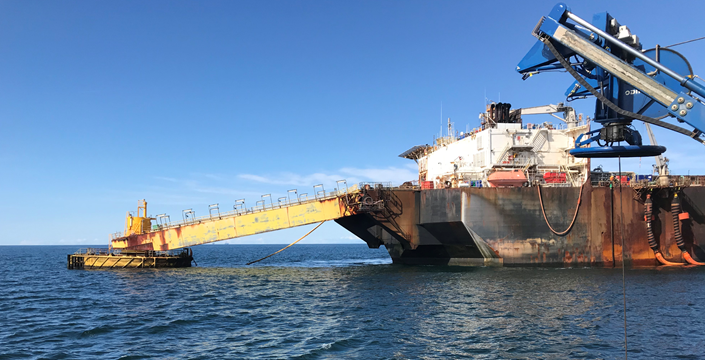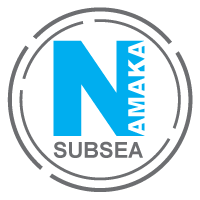OSI Control Umbilical Replacement

Overview
Namaka subsea were contacted by a leading Oil and Gas operator to provide a diving technical authority to oversee a two-phase project in Liverpool Bay. Phase one of the project required the replacement of the existing control umbilical between an OSI tanker, Catenary Anchor Leg Rigid Arm Mooring (CALRAM) and Pipe Line End Manifold (PLEM), which had failed. Phase two of the project required the recovery of scaffolding debris at the Douglas DD platform by both a work class ROV and 3x surface intervention dives for items inside the platform jacket where the WROV could not access.
Issues
Phase one:
The control umbilical between the CALRAM and PLEM had failed and needed to be replaced. The main issue with this part of the project was due to the umbilical size; it could not be removed in one piece.
Phase two:
The core issue with this part of the project was the lack of space available within the platform's jacket to remove the scaffolding debris using the WROV safely.
Solution
Phase one:
The OSI tanker CALRAM to PLEM has a Control Umbilical (CU) secured to a single flexible riser. This CU was disconnected and recovered to the surface by means of disconnecting the securing clamps and cutting into sections, and subsequent recovery back on to the deck of the Diving Support Vessel (DSV).
Once recovered to the deck, a new control umbilical had to be installed and secured to the flexible riser connected to the Subsea Umbilical Termination (SUT) under the buoy, which was also secured to the flexible riser, and a SUT secured on the PLEM. Flexible jumper hoses were then connected between the buoy/ PLEM and SUTs, where the system was to be commissioned.
Also, inspection work was carried out on the CALRAM anchor chains, underside of the buoy to thrash zone locations and the chain to wire anchor connections on the seabed.
Phase two:
After completing phase one of the project, a scaffolding debris recovery programme was carried out at the Douglas DD platform by WROV, and 3 x surface intervention dives for items inside the jacket where the WROV could not access.
The Diving operations were carried out using 28/72 Nitrox and surface decompression for the deeper dives. Two DDCs were mobilised to help minimise diver turnaround. Predominantly diving operations were carried out using a single diver but had two diver operations capability when required.
Operations were carried out on a 24-hour basis with eight divers per shift.
The WROV onboard carried out SIMOPS during diving operations and during periods where diving operations had ceased due to tide or weather. The WROV was utilised to assist the divers and to carry out pre-inspection works of the chains and connector plates on the seabed, which required dredging.
Conclusion
Overall, this two-phase project in Liverpool Bay ran very smoothly and took 40 days to complete in total. During the project, the dive team carried out a total of 123 dives from the surface down to a depth of 39m. All equipment used during the project was very well maintained, resulting in no breakdowns or malfunctions throughout the duration of the work scope.

Looking for a Diving Technical Authority?
get in touch and find out how we can halp
